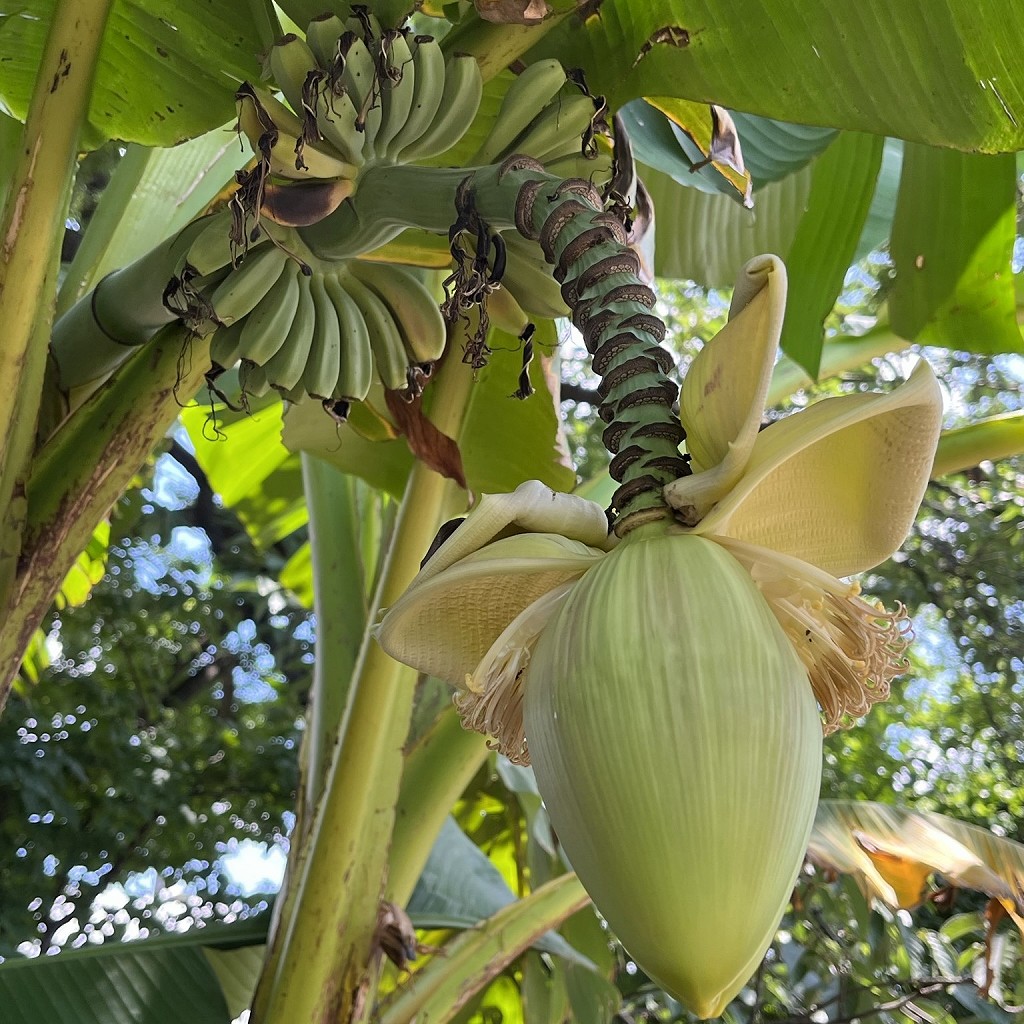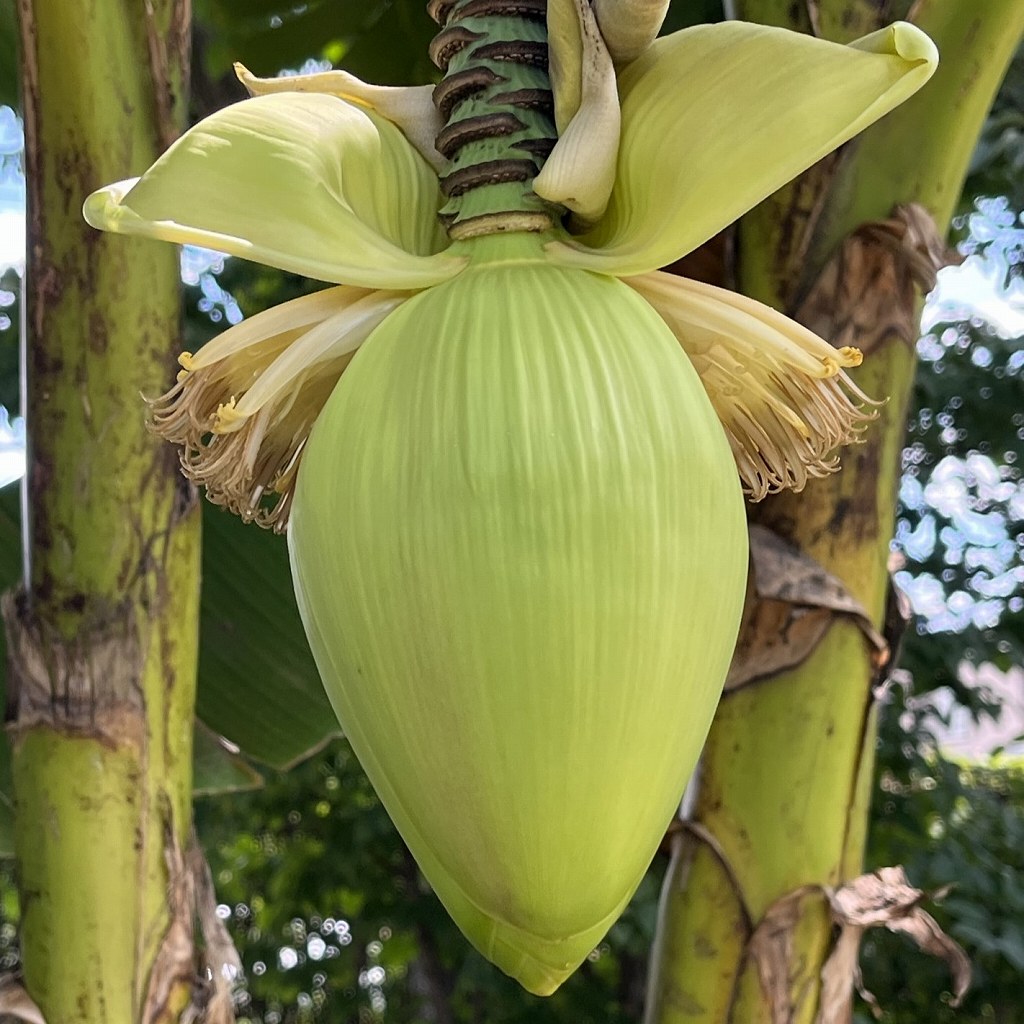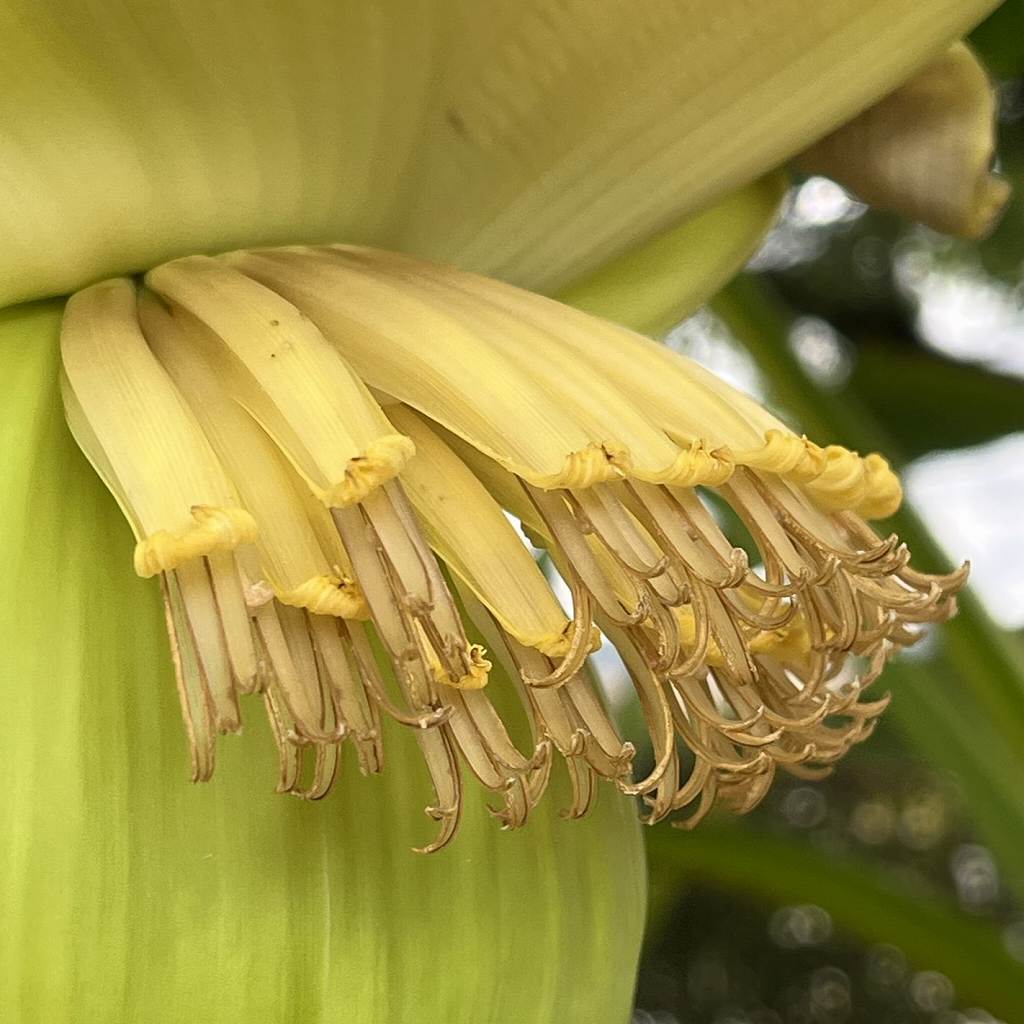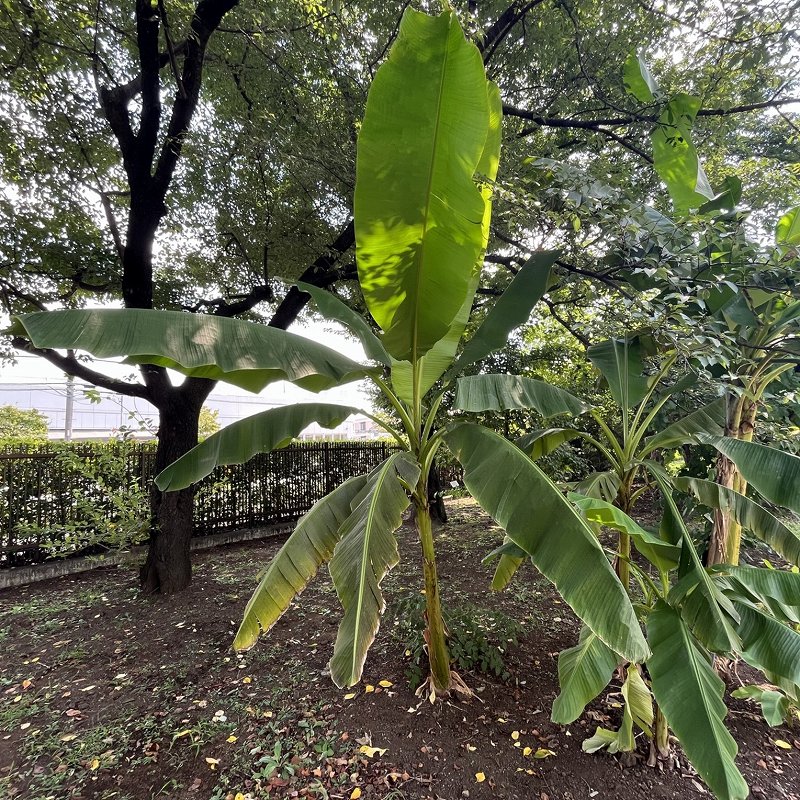バショウの花は偽茎の中ほどから花茎が伸び、先端に大きな苞葉を冠して下垂。花茎の基部で雌花が、苞葉の付け根で雄花が2列に並びます。
In Japanese Banana, a flower stalk extends from the middle of the pseudostems, and the tip of the flower stalk droops with large bract leaves. Female flowers bloom at the base of the flower stalk and male flowers at the base of the bract leaf, each arranged in two rows.
【仮名】バショウ
【和名】芭蕉
【英名】Japanese Banana
【学名】Musa basjoo
【誕生】08/ 02
【開花】06, 07, 08月
【花色】White, Green, Yellow






バショウ
バショウの概要
バショウはバショウ科バショウ属の多年草です。原産地は亜熱帯の中国南部で、日本へは平安時代に渡来。寒さに強く、関東地方以西では露地で育ちます。観賞用のほか、根茎や葉が解熱や利尿などの薬用に。「無常」の象徴でもあり、江戸時代の俳諧師・松尾芭蕉が庵に植えました。
バショウの名前
バショウの名前の由来は漢名「芭蕉」の音読み。漢名は「巴」や「焦」が「干からびる」という意味で葉が落ちずに枯れるからです。ラテン語の属名ムサは紀元前1世紀の植物学者の名前、種小名バショーは和名に由来。19世紀に来日したドイツの博物学者シーボルトが命名しました。
バショウの根と葉
バショウは根茎が肥大し、子株を生じながら周りに広がります。葉鞘が重なり合って株元から真っ直ぐ立ち上がり、偽茎を形成。葉は最初に巻いて立ち上がり、やがて開いて倒れます。大きな長楕円形で、主脈から伸びた側脈が直角に並列。風雨で破れやすく、葉脈に沿って裂けます。
バショウの花と実
バショウの花は偽茎の中ほどから花茎を伸ばし、先端に大きな苞葉を冠して下垂。花茎の基部で雌花が、苞葉の付け根で雄花が2列に並びます。花後は苞葉を落としながら、バナナに似た小さな液果を結ぶものの、食用には不向き。果肉は渋味が強く、大きな種子がたくさん入ります。
バショウの近縁
バショウの近縁種「バナナ」は姿形が似ている一方、液果が大きく甘く食べられるため、「実芭蕉」と呼ばれます。原産地が熱帯で寒さに弱いため、日本では温室で栽培され、葉の裏が白色、花の苞が赤紫色。「糸芭蕉」は沖縄県に自生し、葉鞘から繊維を採って芭蕉布が織られます。
Japanese Banana
Japanese Banana is a perennial plant of the Musaceae family. Originating in the subtropical southern part of China, it was introduced to Japan during the Heian period. It is resistant to cold and grows outdoors in the Kanto region and to the west. In addition to ornamental use, rhizome and leaves are used for medicinal purposes such as antipyretic and diuretic. It is also a symbol of “impermanence” and was planted in the hermitage by Basho Matsuo, a haiku poet in the Edo period.
The Japanese name of Japanese Banana is the on-yomi of the Chinese name. The Chinese name means “dried up”, because the leaves wither without dropping. The Latin genus name Musa is the name of a botanist in the 1st century BC, and the species name Basjoo is derived from the Japanese name. It was named by Siebold, a German naturalist who came to Japan in the 19th century.
Japanese Banana has an enlarged rhizome and spreads around while producing offspring. The sheaths overlap and stand straight up from the base, forming pseudostems. The leaves first roll up and rise, then open up and fall down. Large oblong shape with side veins extending from the main vein at right angles. It is easily torn by wind and rain, tearing along the leaf veins.
The flowers of Japanese Banana extend flower stalks from the middle of the pseudostems and droop with large bract leaves at the tips. Female flowers bloom at the base of the flower stalk, and male flowers bloom at the base of the bract leaf, each arranged in two rows. After flowering, it drops bract leaves and bears small banana-like berries, but they are not edible. The flesh has a strong astringency and contains many large seeds.
“Musa x paradisiaca”, a closely related species of Japanese Banana, is called “Fruit Banana” because its berries are large and can be eaten sweetly, although it has a similar shape. Since it is native to the tropics and vulnerable to cold, it is cultivated in greenhouses in Japan. “Musa balbisiana” grows naturally in Okinawa Prefecture, and the fiber is taken from the sheath and woven into Bashofu.


